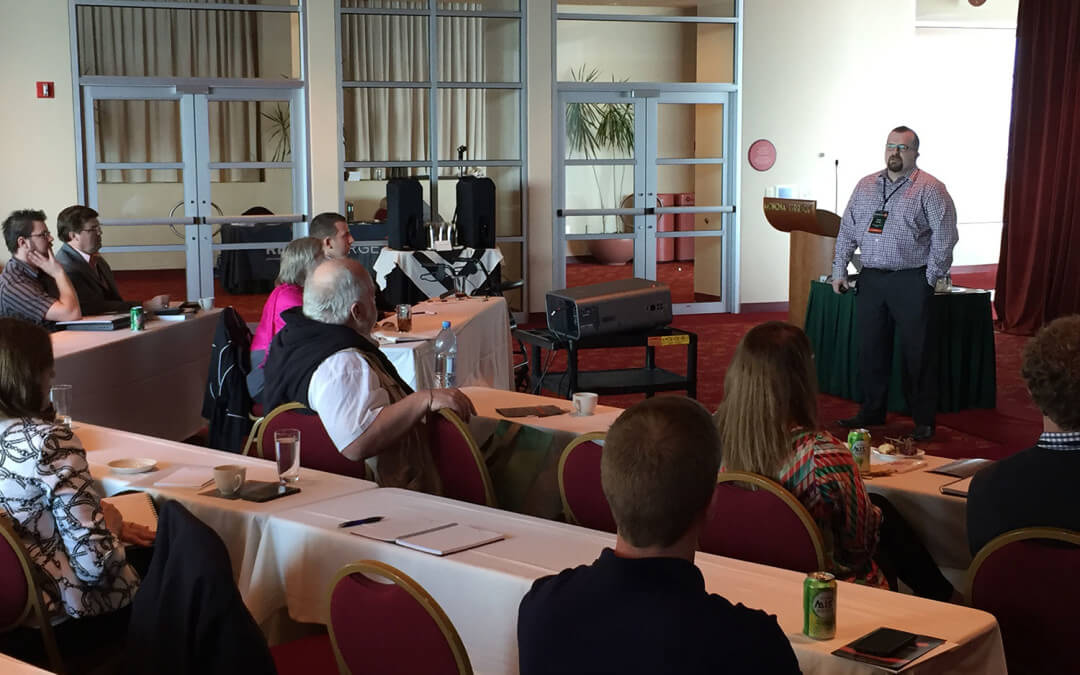CI efforts have capability to forge collaborations.
Rostyk Hursky spoke Wednesday regarding “How Competitive Intelligence supports SMB Business Opportunities with Actionable Insight.”
The agenda:
- Case study with the Saskatchewan Research Council SRC)
- Why formalize CI efforts and what to expect when doing CI
- Linkages of CI to other functions
- Measuring the value of CI
- Future outlook
SRC is a leading provider in Canada of applied research and development and in demonstrating (RD&D) and technology commercialization. The company since 2003 has achieved more than $6.3 billion in combined economic and job impacts in Saskatchewan. They produce $73 million in annual revenue, and the company has more than 69 years in RD&D experience.
The purpose of intel at SRC is that BI is an enabling business partner in supporting strategic and sound business decisions at various stages of the product life cycles. This means they attempt to portray to decision makers that choices will be better when they use insights provided by the SRC. They provide information analysis and perspective in business decision making.
The current state of intel at SRC is linked to strategy, mission and vision. They work in business development, and provide “backgrounders” on individuals for the business development staff. They help set stages of discussion—a HUMINT component.
CI prepares SRC for the future, and they have started to utilize this in some discussion levels regarding future events to impact the business. They strive to help create the evolving SRC enterprise.
At SRC, intelligence comes from a neutral perspective. The ultimate goal is to minimize risk and maximize opportunity; they ask difficult questions and seek growth opportunities. They are a legitimate strategic and tactical research and analysis, not functioning as a “crystal ball”. They use many assumptions and are not “one size fits all” in process implementation.
Finally, per Hursky, know the intelligence function is not useful if no one is listening; management must be willing to act on insights.
Hursky “builds business cases for everything,” and links it to are driving mechanisms for the executive team. They have grown to include aggregation services and other information databases, and have increased budgets such that they have hired additional staff to serve their growing CI need within the company.
Initially, Hursky entered a culture in which they believed they knew everything, and has since experienced a culture shift that he and his team enabled. It took time, and even currently they continue to build relationships within the organization.
CI has helped at SRC through involvement in the lifecycle of products. Others had to trust the CI group would not use information against units providing it. The product succeeded as a result of group involvement facilitated by the CI group.
Why formalize CI efforts?
- All information seems to be important and strategic
- Data overload
- Oversight of key triggers impacting the business
- We know the now, but trends will point to the future
- A sense of trying to catch up, despite having information available
- Someone is responsible for keeping track of and making sense of key insights, trigger and trends that impact the business
Intelligence enables leaders to inspire individuals and put them on a path to reap rewards. Understanding challenges will assist leaders who proactively and preemptively go forward.
In formalizing CI, companies need to know there are many unknowns; there will be uses of assumptions in analytics, CI integration within various processes, relationship building–NOT networking–and initially there will be many questions with few answers.
Hursky knows key influencers and how they like to obtain information; whether with a very detailed report hundreds of pages long or a two-page summary. He accommodates the preferences of the end user.
CI cannot do it alone—the function needs to consider evolving needs of the company and its clients, and grow CI efforts in accord with these needs. In formalizing the intelligence function, you will challenge the status quo and historical patterns with intent to provide actionable insights.
There is no template approach in formalizing the intelligence function, but there are many lessons learned—learn from those what have tried, and apply these lessons to your company’s needs.
Formalizing CI does not mean you need a department to do this, but that it should be a part of someone’s job,
In a large company, potential exists to outsource CI with available dollars, but can be cut in downsizing. Small to no CI budgets exist in small to medium companies.
Gaining buy in for CI at large companies can be challenging due to the number of staff to convince—resistance may provide obstacles due to many perspectives. At smaller companies, you can more quickly demonstrate value due to the size of the company; linkages are easily formed and value more readily demonstrated.
Concerning CI collaborations and knowledge sharing, access to and utilization of enterprise knowledge is difficult as people hoard knowledge. The culture must be developed that greater sharing of information will be beneficial. Bigger companies have access to enterprise management systems—a better approach to data sharing, although it can be spread all across the company and may not be well organized.
SRC’s CI group has many linkages across organizational functions: Marketing, business development, finance, risk strategy/foresight/early warning system, patent analytics, and the sales team. They demonstrate and grow value in many aspects of the company.
How does Hursky measure the value of CI at SRC?
This is a difficult task, but they do economic impact studies, and examine new opportunities created as a result of CI efforts. New clients are acquired via CI and there can be explanation of reduced risks and uncertainties through linkages with various early warning systems and technology assessments, for instance.
Further, Hursky points to networks created both internally and externally, the types of projects and their connections to strategy, growth ideation and technological advancements, and demonstrated thought leadership to various entities.
